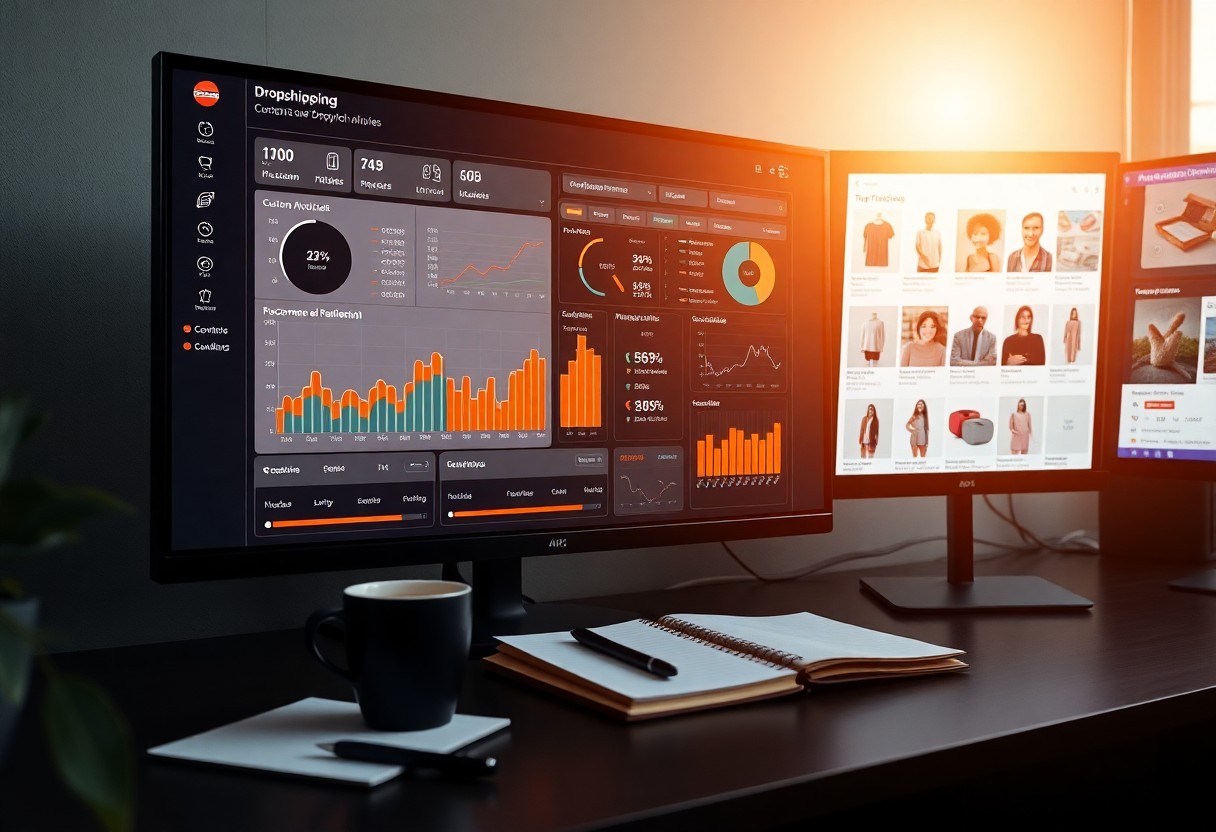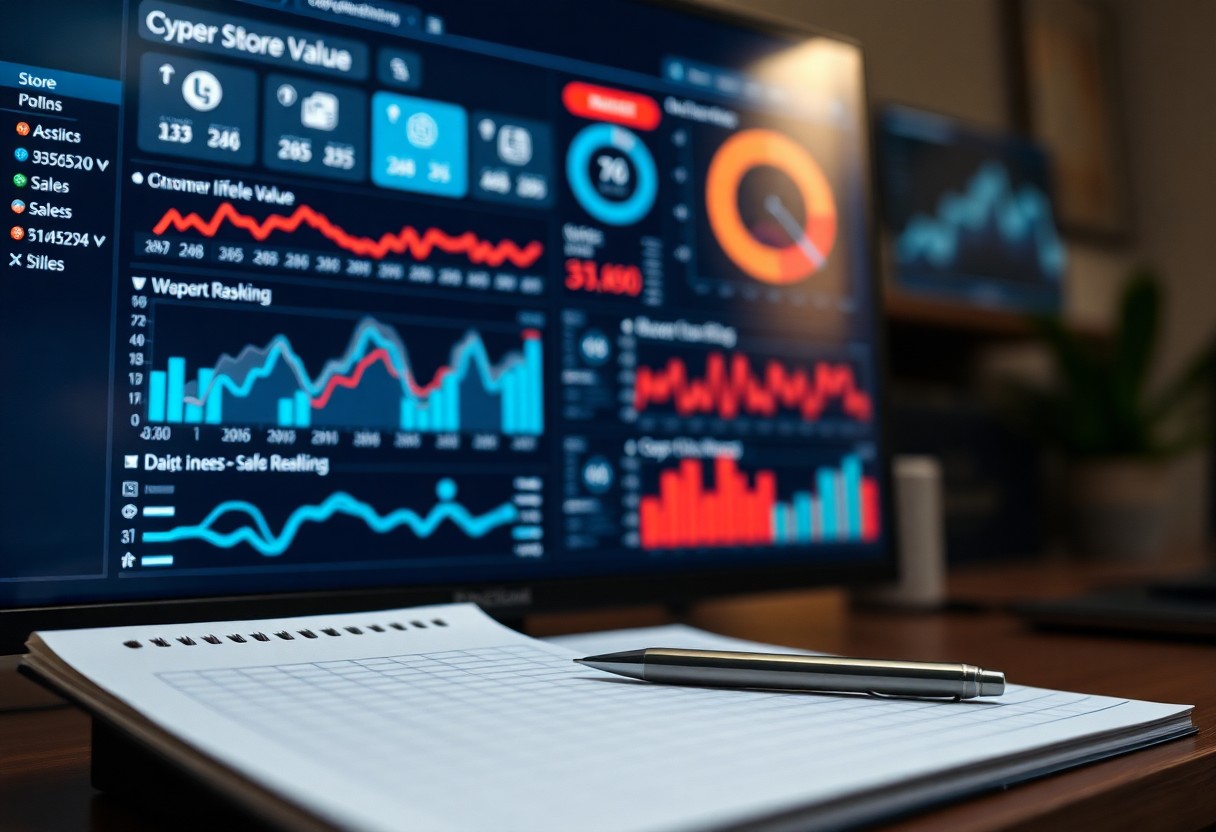Analyzing Your Dropshipping Store’s Performance with Key Metrics
Over time, understanding key performance indicators (KPIs) is vital for optimizing your dropshipping store’s success. By focusing on metrics like conversion rate, average order value, customer acquisition cost, and customer lifetime value, you can assess your store’s strengths and weaknesses. In this article, you’ll learn how to effectively measure and interpret these metrics, enabling you to enhance your decision-making and drive long-term growth.
How to Measure Key Performance Indicators (KPIs)
Tracking your store’s performance involves a clear understanding of various KPIs. Begin by identifying the key metrics that align with your business goals, and use analytics tools to gather data effortlessly. Regularly analyze these figures to make informed decisions, allowing you to optimize your marketing strategies, enhance customer experiences, and ultimately boost your sales.
Understanding Conversion Rate
Your conversion rate reflects the percentage of visitors who complete a desired action, such as making a purchase. To improve this metric, ensure that your store provides a seamless shopping experience, including intuitive navigation, appealing product displays, and simple checkout processes. Additionally, A/B testing different strategies can aid in determining what effectively drives conversions.
Calculating Average Order Value
The average order value (AOV) is calculated by dividing total revenue by the number of orders within a specific period. This metric helps you gauge customer spending habits, allowing you to tailor your upselling and cross-selling strategies accordingly.
To calculate AOV accurately, sum up all sales generated over a period and divide that by the total number of orders placed. For instance, if your store generated $10,000 in revenue from 200 orders, your AOV would be $50. Enhancing AOV can involve implementing strategies like offering product bundles or incentivizing customers with discounts on higher-value purchases, ultimately increasing overall revenue.

Tips for Reducing Customer Acquisition Cost
To effectively lower your customer acquisition cost, start by refining your target audience through market research. Utilize organic social media, influencer partnerships, and engaging email campaigns to attract customers without high expenses. Offering valuable content and maintaining outstanding customer service builds brand loyalty, reducing long-term costs. Invest in retargeting strategies to convert potential customers who have already shown interest. Ultimately, focusing on customer lifetime value will support sustainable growth. After implementing these tactics, you will likely notice a significant decline in acquisition costs.
Effective Marketing Strategies
Implementing targeted marketing strategies can significantly enhance your outreach. Leverage social media platforms to run efficient campaigns that resonate with your specific audience. Consider A/B testing ads to determine which messaging and visuals yield the highest engagement, adjusting strategies based on real-time data. Additionally, utilize SEO techniques to improve your organic reach and attract customers without incurring high costs. Each of these strategies contributes to greater brand visibility and ultimately lowers acquisition costs.
Optimizing Advertising Spend
Focus on measuring the ROI of various advertising channels to refine your spend. Collect data on how each platform performs concerning conversion rates and adjust allocations accordingly. Instead of spreading your budget thin across multiple platforms, concentrate on those that yield high returns. Regularly revisiting and analyzing these metrics will help you pinpoint successful ads while eliminating underperformers. Clear insights into platform performance is vital for maximizing efficiency in advertising expenditures.
When optimizing your advertising spend, consider using analytics tools to gain insights into customer behavior and engagement. Understanding which channels drive the most conversions allows you to allocate your budget effectively, ensuring you invest primarily in high-performing ads. For instance, if Facebook ads generate a superior conversion rate compared to Google Ads for your product type, shift more of your budget in that direction. Continually monitor these metrics to adjust strategies in real-time, enhancing overall effectiveness and efficiency. Over time, you’ll see a marked improvement in your customer acquisition costs.

How to Determine Customer Lifetime Value
To calculate your customer lifetime value (CLV), multiply the average purchase value by the number of purchases per year and the average customer lifespan in years. For instance, if your average order value is $50, customers make three purchases annually, and you expect them to stay for five years, your CLV would be $750. This metric informs your marketing budget and highlights the financial worth of retaining each customer.
Importance of Retaining Customers
Retaining customers is significantly more cost-effective than acquiring new ones. Studies show that it can be up to five times cheaper to keep existing customers, allowing you to allocate resources more efficiently. Additionally, loyal customers tend to spend more over time, directly impacting your bottom line and enhancing your brand reputation.
Strategies to Increase Loyalty
To bolster customer loyalty, implement personalized communication, loyalty programs, and exceptional customer service. Tailoring your marketing efforts to customer preferences significantly enhances their connection to your brand, while rewarding repeat purchases fosters a sense of appreciation. Streamlining customer support processes ensures that customers feel valued and supported at every step of their journey.
Consider implementing a points-based loyalty program where customers earn points for every dollar spent, incentivizing repeat purchases. For example, offering double points during special promotions can create urgency and drive immediate sales. Email follow-ups post-purchase, asking for feedback or offering discounts on their next purchase, show that you value their opinions and keep your brand top-of-mind. Engaging customers through personalized discount codes on anniversaries or birthdays can significantly enhance their emotional connection with your brand, solidifying their loyalty.

Factors Influencing Store Performance
Your dropshipping store’s performance can be affected by various factors. Key elements include site design, product selection, pricing strategy, and customer service. Each can significantly impact your conversion rates and customer satisfaction. Understanding these influences allows for targeted improvements. Any adjustments made to these factors can lead to substantial changes in performance.
Site Design and Usability
The design and usability of your site must prioritize user experience. A well-organized layout, intuitive navigation, and mobile responsiveness enhance visitor engagement, leading to higher conversion rates. Use high-quality images, concise descriptions, and a clear call-to-action to facilitate seamless shopping experiences.
Product Selection and Pricing
Your choice of products and their pricing can either attract or deter potential customers. Ensure your product range meets market demand, balancing popular items with unique offerings. Competitive pricing, along with clear value propositions, enhances your attractiveness in a crowded marketplace.
To drive sales, analyze trends and customer preferences when curating your product offerings. Look for items with high margins and consistent demand. Leverage data tools to track competitor pricing and adjust your strategy accordingly. Offering bundled items or discounts can also entice customers to increase their average order value, maximizing profitability across your store.
How to Analyze Traffic Sources
Understanding your traffic sources is vital for optimizing your dropshipping performance. By analyzing where your visitors come from, you can allocate resources more effectively. For insights on vital metrics, refer to Dropshipping KPIs You Need to Track for Your Store in 2025. This will help you differentiate between various traffic channels and tailor your marketing strategies accordingly.
Measuring Organic vs. Paid Traffic
Evaluating organic versus paid traffic gives you insights into your marketing efficiency. Organic traffic often has a lower customer acquisition cost and reflects strong SEO efforts, while paid traffic can lead to quicker results. By assessing the proportion of each, you can identify which strategy yields the best return on investment, helping you balance your marketing budget effectively.
Interpreting Referral Data
Referral data uncovers the websites that direct traffic to your store, revealing valuable partnerships or marketing opportunities. Analyzing this data allows you to see which sites drive the most conversions and where to focus your outreach efforts. It’s vital to track these sources to optimize your partnerships and create targeted marketing campaigns.
For example, if you notice that a specific blog or influencer is sending a considerable amount of traffic, you might consider strengthening that relationship or even launching a dedicated campaign with them. A well-performing referral can significantly boost your store’s visibility and sales. Conversely, if a referral source yields low conversion rates, it may be wise to reevaluate its effectiveness and either optimize your approach or remove it from your priority list. Understanding this data enables you to refine your marketing tactics for maximum impact.
Tips for Improving Overall Performance
To enhance your dropshipping store’s performance, focus on key metrics that drive success. Prioritize conversion rates and optimize your site design to improve user experience. Additionally, increase your average order value by implementing upselling strategies. Regularly analyzing your traffic sources helps you allocate resources effectively. Invest in targeted marketing campaigns to reduce your customer acquisition cost. The Top 25 Ecommerce KPIs to Track For Your … is fundamental for your growth.
Regularly Reviewing KPIs
Consistently reviewing your key performance indicators (KPIs) allows you to stay aligned with your business goals. Set a schedule to evaluate metrics like conversion rates and customer lifetime value monthly. This practice helps you identify trends and areas needing improvement. By staying informed, you can make timely adjustments that positively impact your store’s performance.
Implementing Data-Driven Decisions
Using data to guide your decisions can vastly improve your dropshipping store’s outcomes. Analyze trends in your customer behavior and adjust your strategies accordingly. For example, if your average order value is lower than the industry average, consider revising your pricing or offering bundled products. Leverage statistical insights to enhance your marketing campaigns and promotional offers, converting data into actionable strategies.
Successful dropshipping hinges on your ability to make informed choices backed by solid data. By closely monitoring your KPI metrics and understanding what your data reveals, you can pinpoint opportunities for growth. Analyze customer acquisition costs to fine-tune your marketing expenditures, focusing on the channels yielding the highest returns. Embrace a proactive approach to adapt your offerings, improving overall customer satisfaction and driving higher sales volume.
Conclusion
Summing up, analyzing your dropshipping store’s performance through key metrics is imperative for sustainable growth. By tracking indicators such as conversion rate, average order value, customer acquisition cost, and customer lifetime value, you can gain valuable insights into your business’s health. Understanding these metrics enables you to make informed decisions that enhance profitability and improve customer satisfaction. Regularly evaluating these KPIs will help you refine your strategies and ensure long-term success for your dropshipping venture.
FAQ
Q: What is the conversion rate and why is it important?
A: The conversion rate is the percentage of visitors to your store who complete a purchase. It is calculated by dividing the number of sales by the total number of visitors and multiplying by 100. A higher conversion rate indicates effective marketing and website design, making it an crucial metric for evaluating store performance.
Q: How can I calculate my average order value (AOV)?
A: Average order value is calculated by dividing total revenue by the number of orders placed during a specific time frame. AOV helps in understanding customer spending behavior and can guide strategies like upselling or bundling products to increase overall revenue.
Q: What is customer acquisition cost (CAC) and how is it determined?
A: Customer acquisition cost is the total expense associated with acquiring a new customer, including marketing and advertising costs divided by the number of new customers gained. Tracking CAC helps in assessing the efficiency of marketing campaigns and understanding the profitability of customer acquisition strategies.
Q: How is customer lifetime value (CLV) calculated, and why does it matter?
A: Customer lifetime value is calculated by estimating the average revenue a customer generates during their entire relationship with your store. This metric is important as it helps store owners understand the long-term profitability of their customer base and aids in making informed decisions about marketing budgets and customer retention strategies.
Q: What metrics should I monitor regularly to evaluate my dropshipping store’s performance?
A: In addition to conversion rate, average order value, customer acquisition cost, and customer lifetime value, store owners should monitor metrics such as cart abandonment rate, sales growth rate, and return on ad spend (ROAS). Regularly tracking these metrics provides insights needed for optimizing store performance and profitability.

